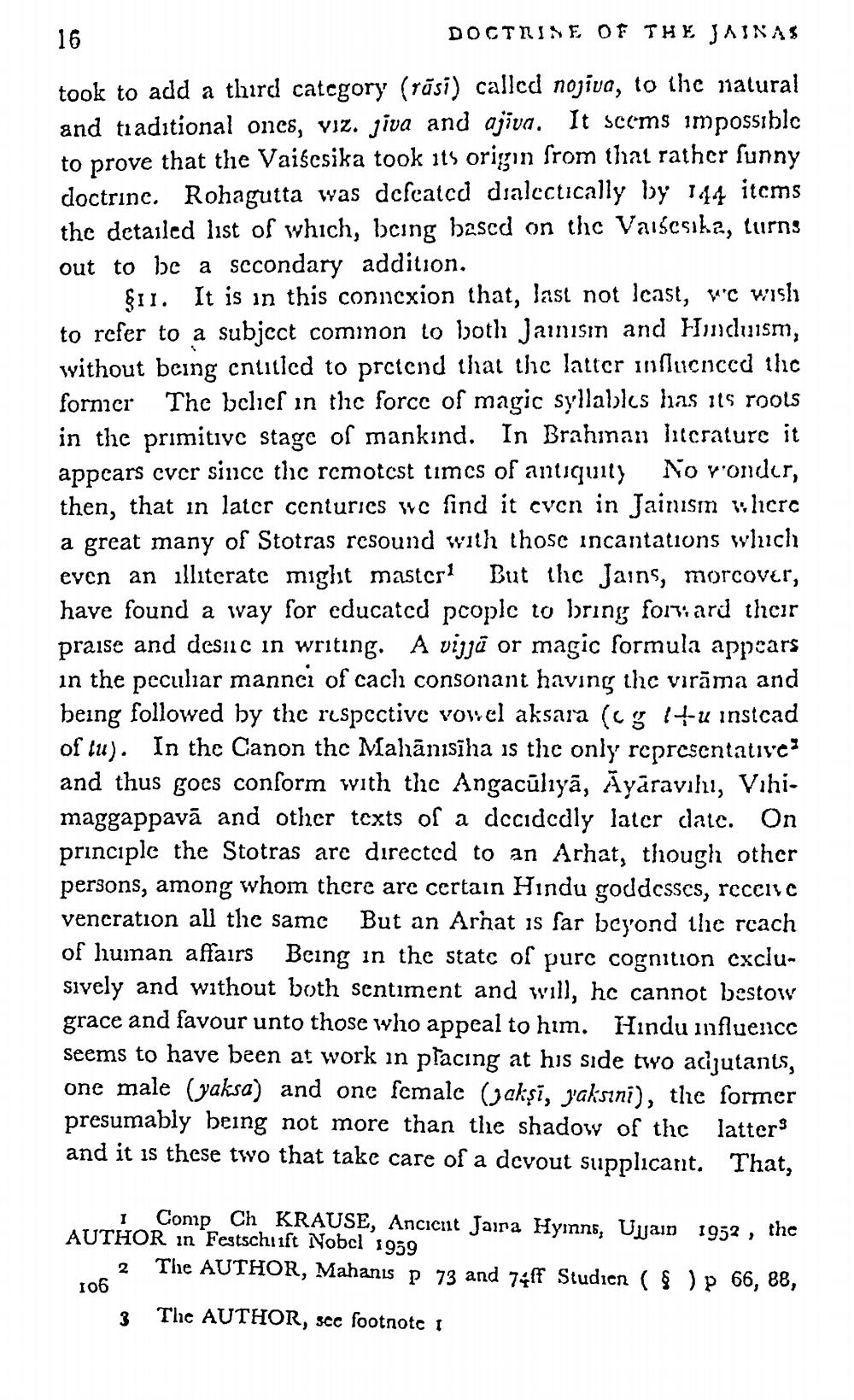________________
16
DOCTRISE OF THE JAINAS took to add a third category (rasi) callcd nojiva, to the natural and traditional ones, viz. jiva and ajiva. It scems impossiblc to prove that the Vaiścsika took its origin from that rather sunny doctrine. Rohagutta was dcfcatcd dialectically by 144 items the detailed list of which, being hascd on thc Vaiscsika, turns out to be a secondary addition.
$11. It is in this connexion that, last not lcast, we wish to refer to a subject cominon lo both Jainisin and Hinduism, without being entitled to pretend that the latter influenced thic fornier The bclief in the force of magic syllables has its roots in the primitive stage of mankind. In Brahinan litcrature it appears cver since thc rcmotcst times of antiquity No r'ondur, then, that in later centuries wc find it even in Jainism whicro a great many of Stotras resound with those incantations wluch even an illiterate might master But thc Jains, morcover, have found a way for cducatcd pcoplc to bring forvi ard their praise and desic in writing. A vijja or magic formula appears in the peculiar mannci of cach consonant having the virāma and being followed by the respective vowel aksara (ca Htu instcad of tu). In the Canon the Mahānisīha is the only representative and thus goes conform with the Angacūliyā, Ayarayıhı, Vihi. maggappavā and other texts of a dccidcdly later date. On principle the Stotras are directed to an Arhat, though other persons, among whom there are certain Hindu goddesses, rcccnc vencration all the same But an Arhat is far beyond the rcach of human affairs Being in the state of purc cognition cxclusively and without both sentiment and will, he cannot bestow grace and favour unto those who appeal to him. Hindu influence seems to have been at work in placing at his side two acijutants, one male (yaksa) and one female (akşi, yaksini), the former presumably being not more than the shadow of the latters and it is these two that take care of a devout supplicant. That,
1 Comp Ch KRAUSE, Ancient Jaira Hyınns, Ujjain 1952, the AUTHOR in Festschrift Nobel 1959
2 The AUTHOR, Mahanus p 73 and 74ff Studien ( g ) p 66, 88,
106
3
The AUTHOR, scc footnote i




